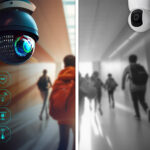AI chatbots are now part of our everyday digital interactions—whether we’re asking questions, seeking entertainment, or even roleplaying through sophisticated AI platforms. I’ve noticed how fast these bots are evolving, but what’s less talked about is the security risks and safety measures involved in how they function. While they seem friendly and helpful on the surface, there’s a lot going on behind the scenes that we should be aware of.
When we speak with AI chatbots, we often share information—sometimes personal, sometimes sensitive. The more realistic the bot feels, the more people tend to open up. This natural behavior is what makes chatbot security such an important topic. Data privacy, identity safety, and ethical safeguards are not just technical concerns; they directly impact how safe we feel using these tools.
What Makes AI Chatbots Vulnerable?
AI chatbots function by collecting input data, processing it through algorithms, and returning a human-like response. The problem arises when these systems store that input or when they’re connected to third-party APIs that might track or log conversations.
We’ve seen incidents where poorly secured bots unintentionally leak data or are manipulated into generating inappropriate responses. This isn’t limited to text either. Some AI bots are now tied to image-generation systems or interactive NSFW platforms, which makes the data even more sensitive.
In the same way that browsers track behavior to target ads, AI chatbots can also be trained on inputs users never meant to share publicly. So, if someone interacts with a chatbot and reveals personal details, there’s always a risk it could be mishandled if the system isn’t built securely.
Data Storage and Encryption Standards
The most reliable AI platforms implement end-to-end encryption or make use of tokenization to protect chat logs. I’ve found that those chatbots that store data for model improvement often do so in anonymized formats. Still, anonymization isn’t foolproof.
For a truly secure system, the data must not only be encrypted but also inaccessible to human moderators unless absolutely necessary. This is especially relevant for chatbots with NSFW capabilities, where content can get explicit and personal. Some users of a Free NSFW chatbot assume their chats disappear after the session ends. However, if the backend stores logs—even temporarily—there’s a chance of breach if security policies are weak.
We’ve seen platforms include “Incognito Mode” as a measure, which helps avoid saving user history. But even then, unless they declare zero retention in their policies, we can’t fully assume our data isn’t recorded.
AI Chatbot Misuse and Ethical Filters
One of the major challenges with chatbot security is not just data protection, but the prevention of misuse. Bad actors may attempt to manipulate the bot into bypassing filters, generating inappropriate or harmful responses.
This is particularly common in platforms associated with adult content. For example, users of an AI porn generator might try to trick the AI into creating illegal or unethical content by wording prompts in a certain way. If security layers aren’t strong enough to detect and block such behavior, it could expose the platform to legal consequences—and the user to unexpected risks.
It’s important that filters aren’t just keyword-based but context-aware. We’ve seen smart models that adapt their responses depending on the type of query, the emotion behind it, or even previously flagged conversation patterns. Still, there are many bots out there with little more than surface-level moderation.
The Role of Human Moderators
Some platforms employ human moderators to oversee flagged conversations. While this may help filter out harmful behavior, it also raises privacy concerns. Who has access to the logs? Are these conversations stored in a readable format for review?
We should always check if a platform clearly states its review policies. Users may think they’re chatting with a fully private AI, but if their message is flagged and later reviewed manually, that assumption breaks.
In some cases, companies use this data to improve their algorithms. While that might sound reasonable, the lack of transparency around who can view or use that information makes things murky. Admittedly, most users don’t read the fine print in privacy policies. That’s why I believe platforms must present these risks in a clearer format—upfront.
Third-Party Integrations and API Security
Many AI chatbots are powered by backend services or APIs from other companies. This adds another layer of potential vulnerability. If the platform you’re using connects with third-party servers for natural language processing, image generation, or speech-to-text, your data may travel beyond the primary chatbot’s control.
That’s how someone could think they’re safe within one environment, when in fact their data is passing through multiple systems. This applies not only to AI tools but also to those tied to AI marketing platforms that collect behavioral data for commercial purposes.
So, while a chatbot itself may have strict safety rules, it’s those external links that often become weak spots. I’ve come across platforms where users were unaware that their chatbot queries were being used for ad profiling or retargeting campaigns.
Open-Source vs. Closed Systems
Another important point in chatbot security is whether the system is open-source or closed. Open-source chatbots allow developers to review the code, spot vulnerabilities, and patch them quickly. However, they also give potential attackers insight into how the system functions.
Closed-source bots, on the other hand, might seem more secure due to their opacity. But this only works if the developers are actively maintaining and testing the codebase. Otherwise, even small bugs or misconfigurations could go unnoticed and lead to breaches.
We’ve seen examples of both open and closed systems being compromised, so the real question is not just what model is used, but how seriously the developers take security upkeep.
User Behavior and Front-End Safety
While back-end security is crucial, we can’t ignore what happens on the user’s side. People often access chatbots from public Wi-Fi, shared devices, or even browsers with outdated security plugins. These entry points are vulnerable, regardless of how safe the bot itself may be.
It’s on us, as users, to log out of shared sessions, avoid typing real names, and use secure networks. I’ve spoken to users who accidentally exposed personal info to bots they thought were just for fun. Whether it’s on an adult chatbot or a support assistant, we should treat these interactions with care.
Likewise, session tokens should expire within a reasonable time, and platforms should notify users of login from a new device. These are basic practices in most secure services, but not all chatbot systems follow them yet.
Regulations and Industry Standards
Eventually, as AI continues to evolve, so will the expectations around its security. I think we’ll see stricter regulations soon, especially when chatbots operate in areas like finance, healthcare, or adult entertainment.
Some early policies require platforms to state how user data is stored and give users the right to request deletion. Still, enforcement varies by region, and many AI chatbot providers operate globally without clearly defining what legal system they fall under.
Until these regulations catch up, it’s up to users to stay cautious and select platforms that offer clear transparency. Whether we’re using a free educational bot or a Free NSFW chatbot, the expectation for safety and accountability should remain the same.
Conclusion
AI chatbot security goes far beyond coding and firewalls. It touches on how data is stored, what people are allowed to say, who can see flagged messages, and how bots interact with external systems.
If we want to continue using these platforms—whether for productivity, pleasure, or professional work—we need to stay informed and cautious. Bot creators should be honest about what they collect and how they secure it. Meanwhile, we should treat each interaction with the same care we give to any other form of digital communication.
- AI Chatbot Security: Risks, Protections & User Safety
- Understand AI chatbot security, including risks, protections, and best practices to ensure user safety across various platforms.
- AI chatbot
Related posts:
 Why KBH Games Is Perfect for Family-Friendly Online Entertainment
Why KBH Games Is Perfect for Family-Friendly Online Entertainment
 Build a Seamless School Portal with These Powerful Templates
Build a Seamless School Portal with These Powerful Templates
 Samsung Galaxy S24 Ultra Price in Pakistan: A Closer Look at the Mid-Range Marvel
Samsung Galaxy S24 Ultra Price in Pakistan: A Closer Look at the Mid-Range Marvel
 The Role of an ATS in Onboarding: Bridging the Gap Between Offer and Start Date
The Role of an ATS in Onboarding: Bridging the Gap Between Offer and Start Date
 How Ecommerce ERP Transforms Inventory and Order Management – Rholab
How Ecommerce ERP Transforms Inventory and Order Management – Rholab
 Benefits of AI-powered CCTV Cameras for Business Surveillance
Benefits of AI-powered CCTV Cameras for Business Surveillance
 Top App Development Agency UK – Transforming Ideas into Apps
Top App Development Agency UK – Transforming Ideas into Apps
 Transforming Oil and Gas Operations in Qatar with Microsoft Dynamics 365 Supply Chain Management
Transforming Oil and Gas Operations in Qatar with Microsoft Dynamics 365 Supply Chain Management







